Grow Your Own Birdseed Plants
Updated: Feb. 14, 2024
Plant sunflowers and other native birdseed plants to feed backyard birds. Native plants also host caterpillars and butterflies.
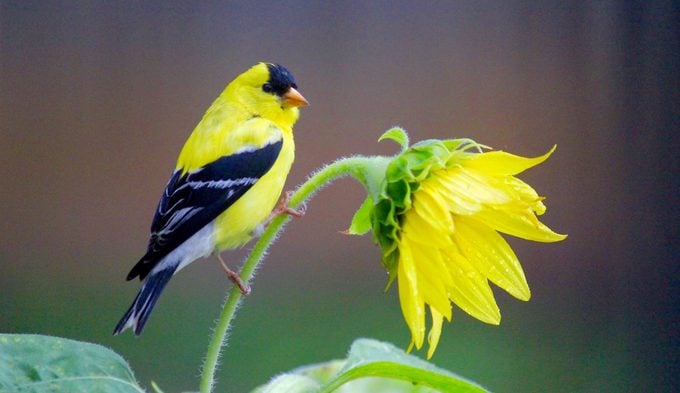
Whether you’re already a dedicated caretaker of backyard feeders or brand-new to birding, it’s always a good idea to kick it up a notch! Native plants that allow you to harvest seeds will attract more birds to your backyard. After all, plants have a lot more to offer than just beautiful flowers. Why not get the most out of your garden by growing birdseed plants to feed your feathered friends?
“Anybody, anywhere they live, can support the birds they love by growing native plants,” says Tod Winston, program manager for the National Audubon Society’s Plants for Birds program.
Check out the National Audubon Society’s Native Plants Database or consult local native plant nurseries to find the best picks for your zone and region.
“The more people who plant native plants in their yard, the more resilient birds are going to be in the face of climate change and in the face of continuing loss of habitat,” Tod says. He adds that nearly 41 percent of all migratory songbird populations in North America are declining.
Sunflowers are an easy-care option that will work in almost every garden. If you’re seeking some variety to beautify your backyard, consider planting other native birdseed plants from the Aster family. Try coneflowers, tickseed and black- and brown-eyed Susans.
On This Page
Sunflowers
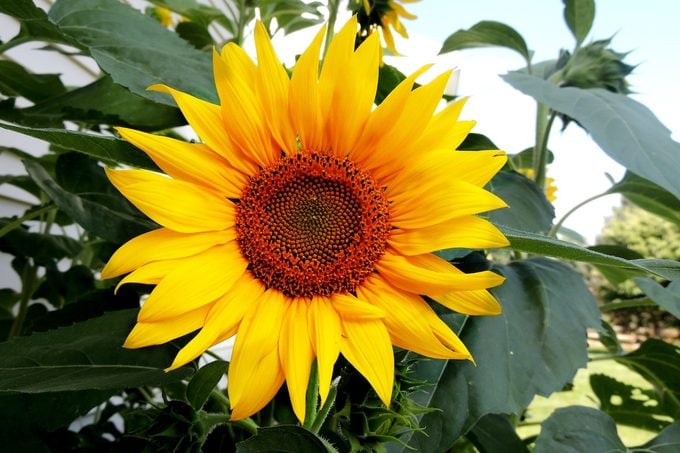
Helianthus annuus, annual
You can’t expect to grow your own birdseed without this classic bird magnet. There are plenty of varieties to choose from, including cultivars that range from 2 to 15 feet tall and colors from yellow to red.
Sunflowers are simple—it doesn’t take much for their seeds to take root. Plant your sunflower seeds in late spring, provide them with plenty of sun and a spot in a patio pot, raised bed or garden, and you’ll soon have a crop of flourishing flowers.
Check out the top 10 sunny sunflower varieties.
Sunflowers benefit many seed-eating birds, including cardinals, grosbeaks, finches, sparrows and more. And their compound flower heads are packed with pollen, so hummingbirds may stop by. These bright beauties also host more than 70 species of native moth and butterfly caterpillars.
That’s a big deal because one nest of Carolina chickadee chicks may eat up to 9,000 caterpillars before fledging. Plus, 90 percent of land birds feed insects to chicks, so it’s important to protect those local populations.
Migrating birds also love the seeds, because they’re high-fat fuel for their journeys south.
Black-eyed Susan
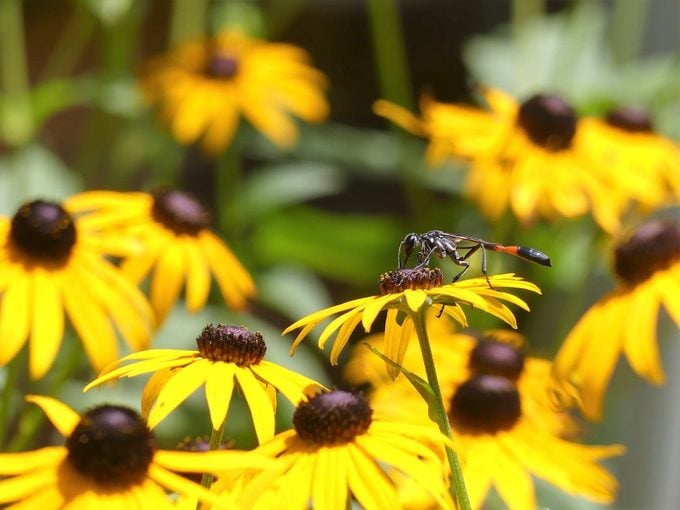
Rudbeckia, Zones 3 to 9
This is another garden classic that birds adore. The traditional black-eyed Susan has dark centers and bright-yellow flowers, but now there are even more varieties to choose from. Grow in full sun to light shade for blooms in summer through autumn.
Blazing Star
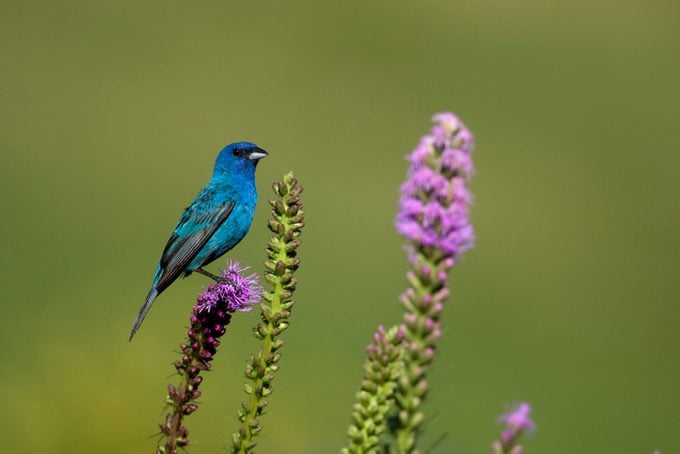
Liatris species, Zones 3 to 9
Many gardeners know these birdseed plants as gayfeather. Don’t be surprised when you see an American goldfinch gripping the purple spikes of the flower head. Blazing star grows up to 5 feet in full to partial sun and blooms in summer.
Coreopsis
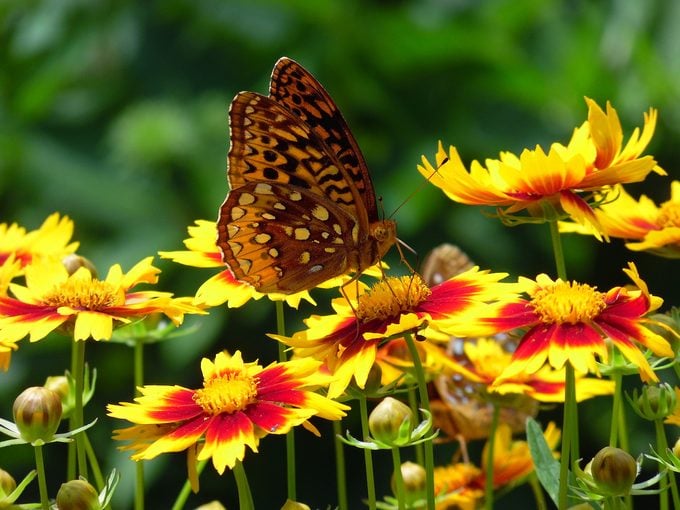
Coreopsis, hardiness varies by variety
It’s not hard to find an annual or perennial coreopsis (also called tickseed) that will flourish in your yard. Plant in full sun and resist the urge to overwater, as it’s a drought-tolerant superstar that blooms in late spring through late summer.
Cosmos
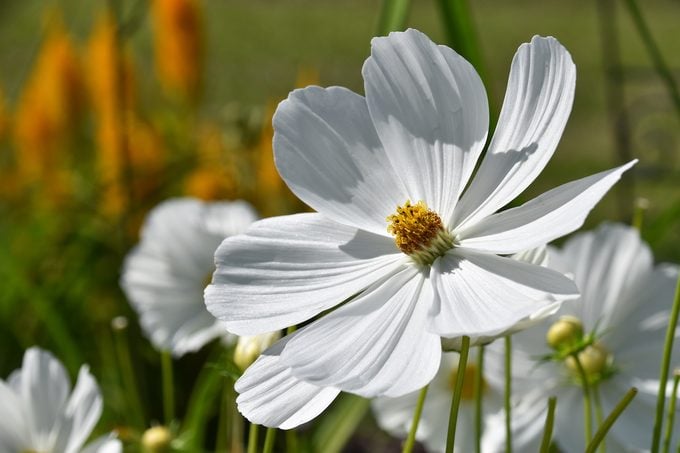
Cosmos bipinnatus, annual
With its gorgeous daisy-shaped blooms, this low-maintenance beauty seems too good to be true. Grow single or double blooms in full sun, and you’ll have cosmos flowers (and seeds to offer feathered friends) from summer through late fall.
Mexican Sunflower
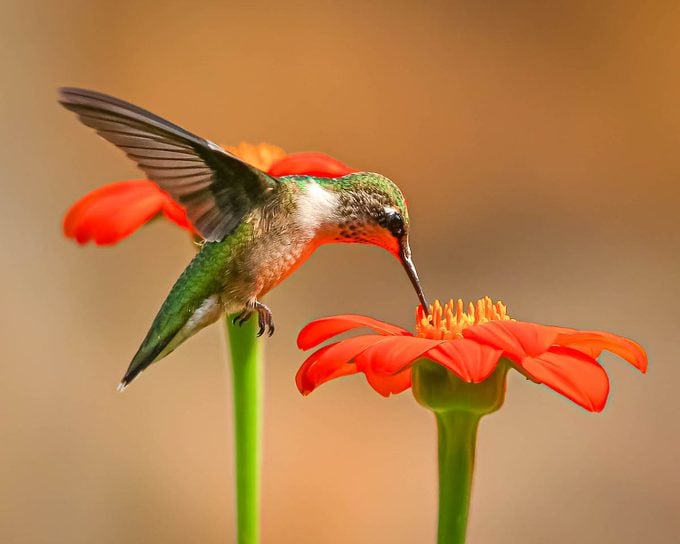
Tithonia rotundifolia, annual
The vibrant, orange flower heads of Mexican sunflower will make a bold statement in any garden. Often mistaken for a zinnia, this sun- and heat-loving plant definitely holds its own when it comes to attracting birds.
Purple Coneflower
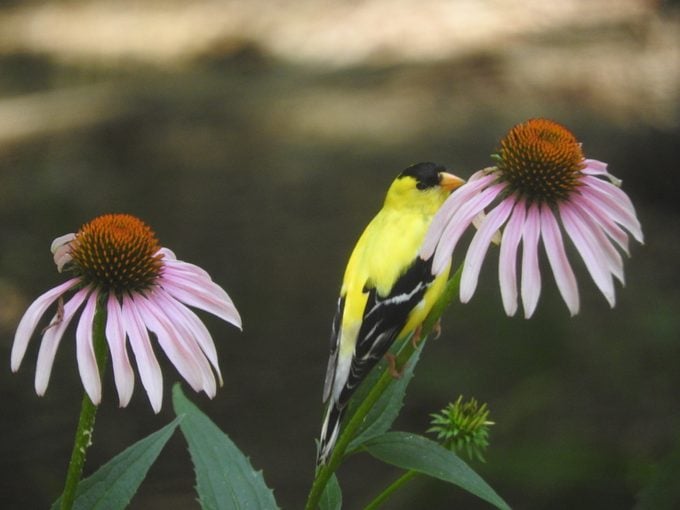
Echinacea purpurea, Zones 3 to 9
Birds will feast on this backyard favorite. New coneflower varieties offer a wide range of colors, including purple, pink, white, yellow and orange. Plant in full sun for gorgeous blooms from midsummer to early fall.
Purple Majesty Millet
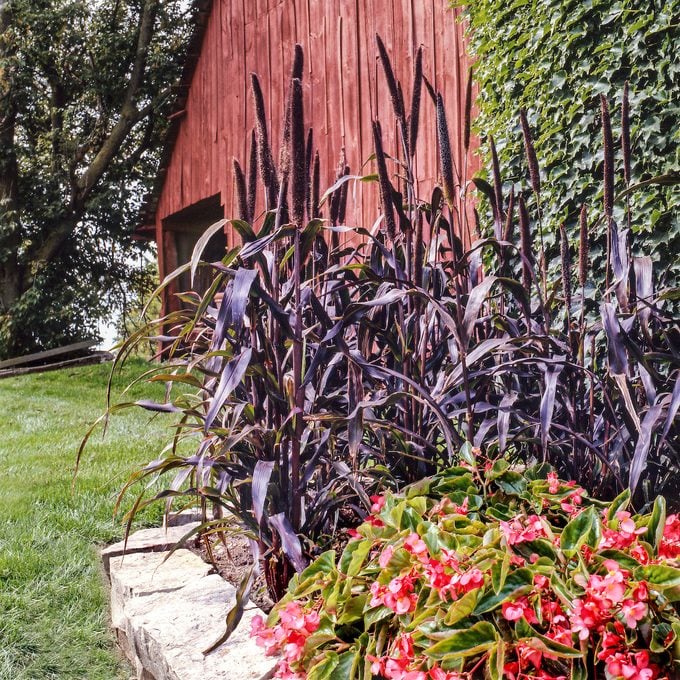
Pennisetum glaucum ‘Purple Majesty’, annual
It’s not as familiar to gardeners as other birdseed plants on this list, but your birds will catch on fast! The plant itself is 4 to 5 feet tall, while the flower stalk offers another foot of delectable goodies for birds. Grow in sun or shade to get amazing foliage from spring to fall.
Safflower
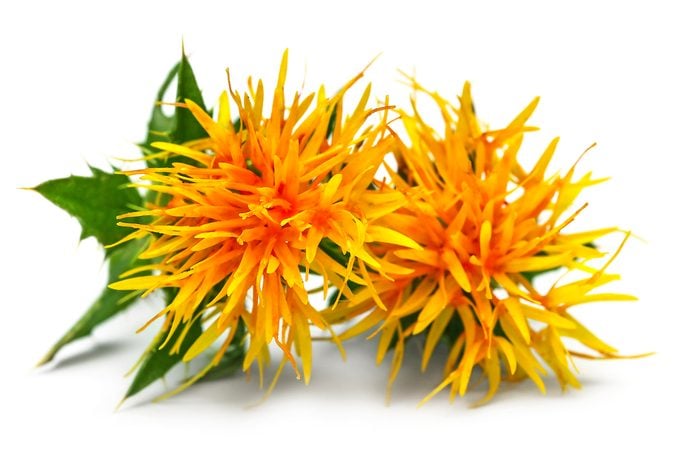
Carthamus tinctorius, annual
Safflower seed is easy to grow and the birds love it! Even if the birds don’t plant it for you, all you need to do is poke some kernels from your seed mix about an inch into the ground in spring. Safflower leaves get spiny as the plant matures. To save your fingers, grow the plant in a casual bed with blue larkspur, bachelor’s buttons, cosmos, marigolds and other easy-care, self-sowing annuals where it can take care of itself.
Even a small planting can keep cardinals, jays, chickadees, titmice, finches, native sparrows and doves investigating all fall and winter.
Why Trust Us
For nearly 30 years, Birds & Blooms, a Trusted Media Brand, has been inspiring readers to have a lifelong love of birding, gardening and nature. We are the #1 bird and garden magazine in North America and a trusted online resource for over 15 million outdoor enthusiasts annually. Our library of thousands of informative articles and how-tos has been written by trusted journalists and fact-checked by bird and garden experts for accuracy. In addition to our staff of experienced gardeners and bird-watchers, we hire individuals who have years of education and hands-on experience with birding, bird feeding, gardening, butterflies, bugs and more. Learn more about Birds & Blooms, our field editor program, and our submission guidelines.
Sources
- The National Audubon Society
- The Cornell Lab of Ornithology, NestWatch
- NATURE documentary series, PBS.org
- Doug Tallamy, professor of entomology and wildlife ecology at the University of Delaware




















